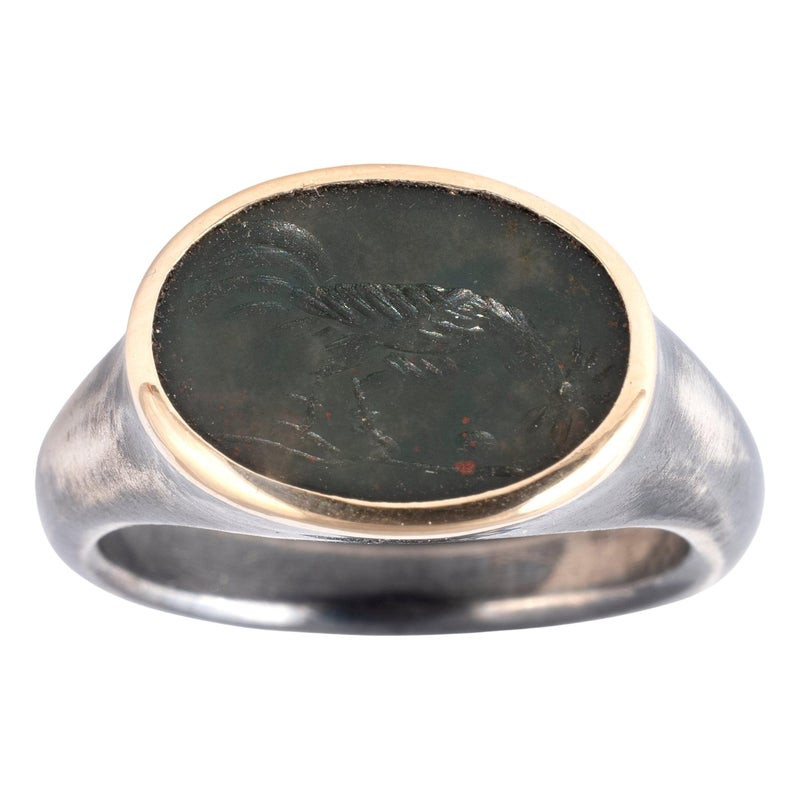

Period: II century A.D.
Ring size: 7
Top size: 21 mm
Weight: 7,68 gr
L’anello si compone di una montatura di epoca vittoriana in argento e oro in cui è incastonato uno splendido intaglio di epoca romana, databile al II secolo, in diaspro verde. L’intaglio, in particolare, è impreziosito da un’incisione di un gallo intento a beccare il terreno, una simbologia con forte valenza apotropaica: il gallo, infatti, è l’animale che annuncia il sorgere del sole, per questo attribuito dai romani a divinità come Apollo che, sul carro del Sole, ogni mattina attraversava il cielo. Nel tempo, dunque, al gallo venne attribuita la capacità talismanica di tenere lontano la cattiva sorte e favorire, al contrario, la fortuna, trovando particolare diffusione nella cultura romana. Questo aspetto e l’azione compiuta dal gallo nell’intaglio, infatti, si legano al concetto di alettromanzia, ovvero una particolare forma di divinazione in cui le lettere dell’alfabeto erano disposte su un cerchio, sopra di esse venivano collocati dei chicchi di grano e l’ordine in cui il gallo li beccava determinava un messaggio ma, qualora non avesse avuto un apparente senso, sarebbe stato l’indovino ad interpretarlo. L’intaglio, dunque, rappresenta un raro esempio di una delle pratiche divinatorie più importanti dell’epoca romana, si presenta in eccellente stato conservativo ed è caratterizzato da un’elevata qualità che determina una perfetta lettura dell’immagine.
The ring consists of a Victorian-era silver and gold setting in which is set a splendid Roman intaglio, dated to the 2nd century, in green jasper. The intaglio, in particular, is embellished with an engraving of a rooster intent on pecking at the ground, a symbolism with strong apotropaic significance: the rooster, in fact, is the animal that announces the rising of the sun, which is why the Romans attribute it to deities such as Apollo who, in the chariot of the Sun, crossed the sky every morning. Over time, therefore, the rooster was attributed the talismanic ability to ward off bad luck and, on the contrary, favour fortune, finding particular diffusion in Roman culture. This aspect and the action performed by the rooster in the intaglio, in fact, are linked to the concept of alectromancy, that is, a particular form of divination in which the letters of the alphabet were arranged on a circle, grains of wheat were placed on top of them and the order in which the rooster pecked them determined a message but, if it had not an apparent meaning, it would have been the soothsayer who interpreted it. The intaglio, therefore, represents a rare example of one of the most important divinatory practices of the Roman era, is in an excellent state of conservation and is characterised by a high quality that determines a perfect reading of the image.





You might also like